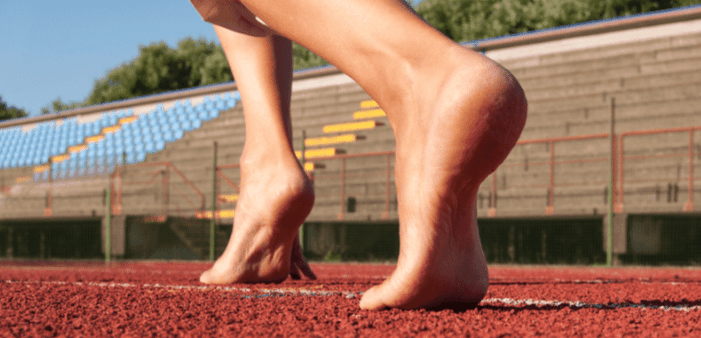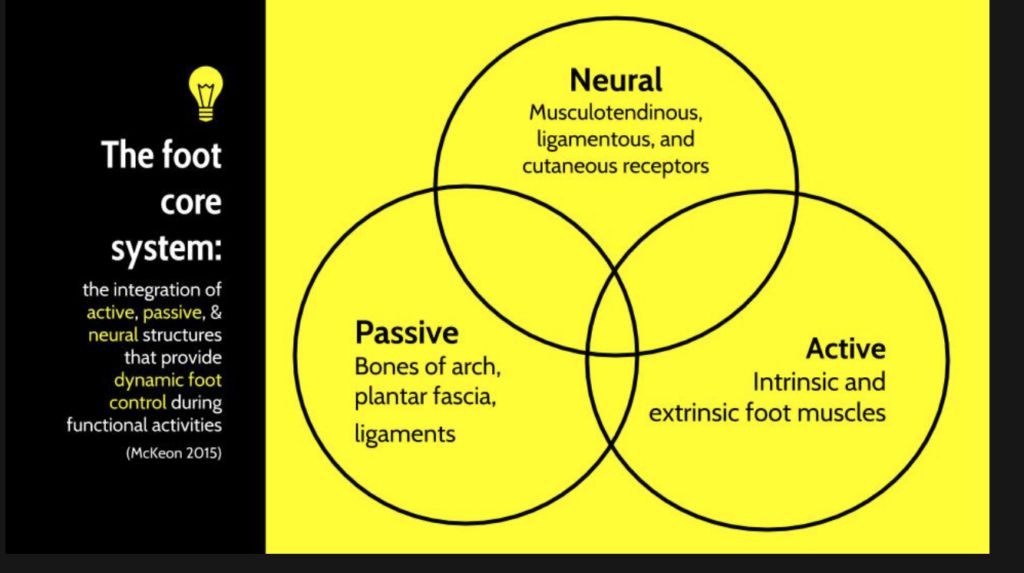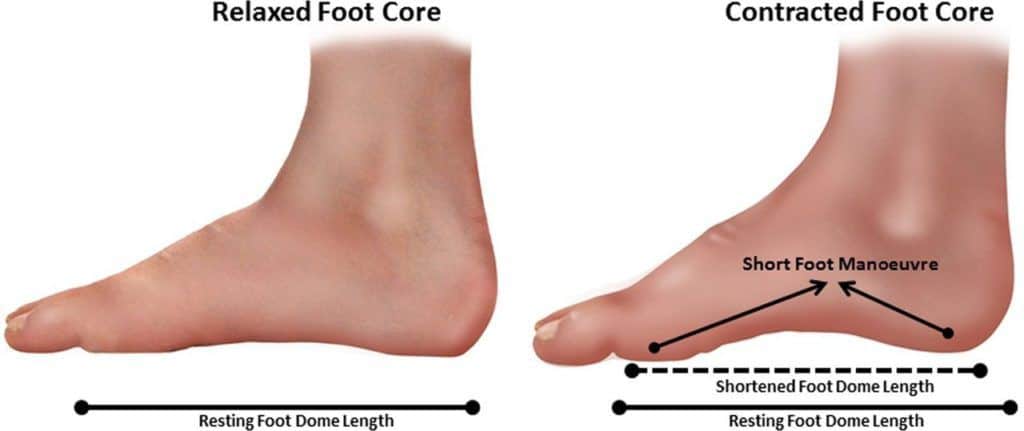Foot Core

Overview
The concept of the foot core is relatively new. For years, the “core” concept has been applied to other parts of the human body – like the abdominal core, for example. However, seeing the muscles in our feet as a core is a far more recent development.
Human feet are very complex structures, made up of numerous bones, muscles, ligaments, and joints. This complexity makes sense, since our feet have to perform many different functions to ensure our day to day mobility. Feet provide a base of support and stability, but they also perform spring-like movements that allow our bodies to store and release energy.
Feet have intrinsic and extrinsic muscles. For a long time, rehabilitation techniques have focused solely on extrinsic muscles. However, research has found that intrinsic muscles are the ones that truly support the arch of your foot and give it the necessary stability.
Research

Passive Subsystem
Active Subsystem
The active subsystem is formed by the muscles that insert on the foot. This includes both the local stabilisers (intrinsic muscles) and the global movers (extrinsic muscles). There are four layers of intrinsic muscles that reach the plantar aponeurosis and align with the four arches of the foot. These muscles support the arches, bear loads, and modulate forces. Extrinsic muscles, on the other hand, create movement and control the foot.
Neural Subsystem

Treatment
Although knowledge about the foot core is relatively new, many well known conditions could actually be a consequences of having a weak foot core. Examples include plantar fasciitis, bursitis, Morton’s neuroma, Achilles tendinitis, shin splints, and stress fractures. That’s why figuring out how to strengthen the intrinsic muscles is so important.







